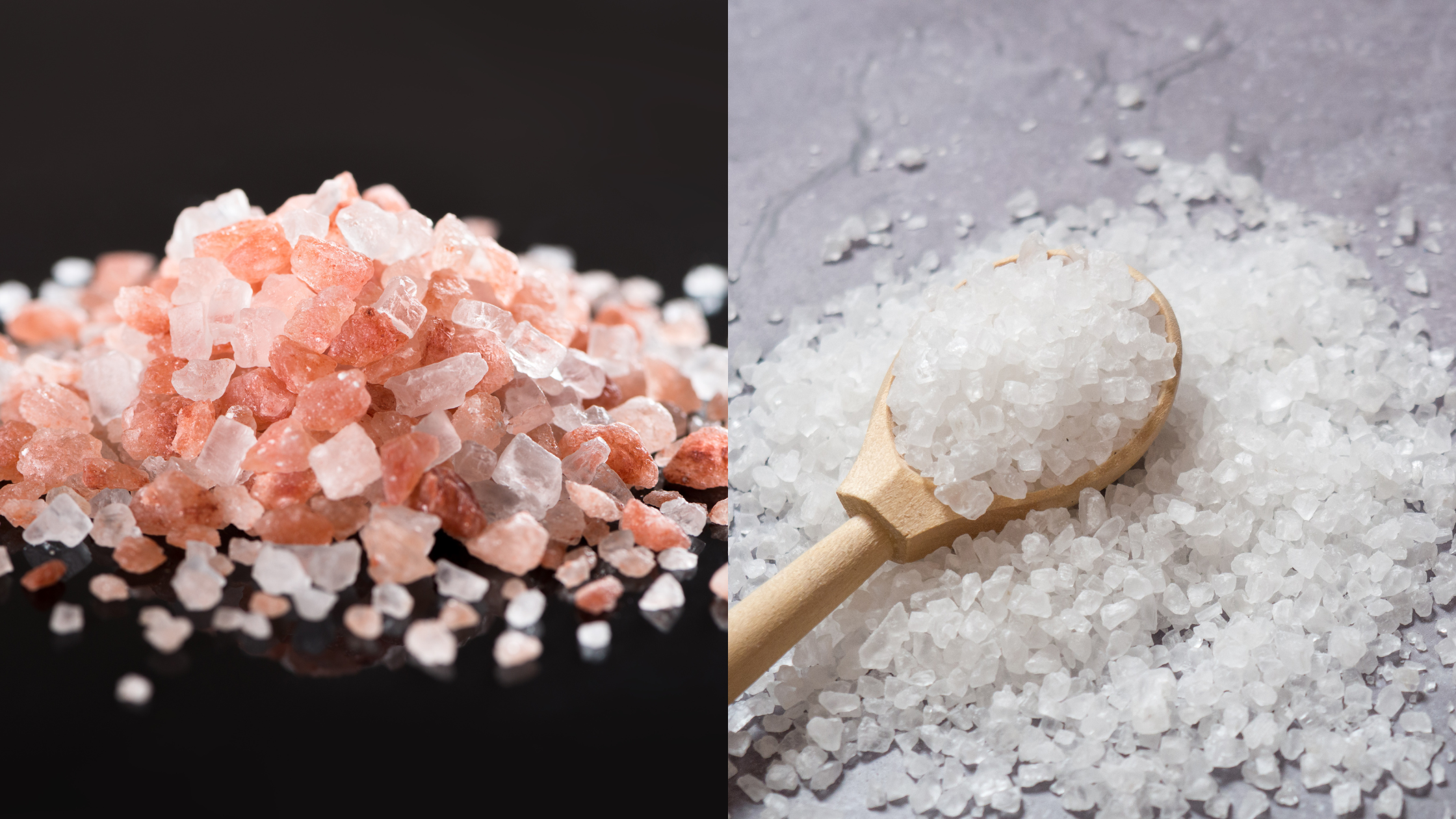Pink Himalayan Salt vs Sea Salt
Gourmet salts come in various varieties and are used for various things. The distinctive characteristics that make them appropriate for particular uses account for their wide range of uses. Here, we’ll talk specifically about the two most widely used salts: sea salt and Himalayan salt.
What is Himalayan Pink Salt and Sea Salt?
Although both Himalayan pink salt and sea salt are primarily composed of sodium chloride, they differ in terms of their hues, textures, mineral contents, and methods of production.
While sea salt comes from seawater, Himalayan rock salt is obtained from underground salt mines, as the name would imply. These two salts can be distinguished from one another by the many ways in which they differ from one another.
Based on their general profiles and characteristics, we will compare and contrast these two salts and highlight their main differences.
Himalayan Pink Salt vs Sea Salt
- Taste of Himalayan Salt vs. Sea Salt
Himalayan pink salt and regular sea salt have similar flavors and saltiness levels. While the taste of sea salt can vary depending on the type of seawater used to make it, Himalayan salt maintains a consistent flavor. - Sodium Content of Himalayan Pink Salt and Sea Salt
Compared to sea salt, himalayan salt contains less sodium. One teaspoon or five grams of sea salt has 1,872 mg of sodium in it, according to studies. While Himalayan rock salt has 1680 mg of sodium per teaspoon. - Advantages Of Himalayan Pink Salt Compared To Sea Salt
Additionally, each of these salts has advantages for food, wellbeing, and health. People utilize them for a variety of reasons as a result.
Advantages of Himalayan Pink Salt
- Provides the body with necessary minerals.
- Increases energy levels.
- Keeps the body’s pH level stable.
- When used as cocktail salt to rim shot and tequila glasses, it improves garnishing.
- Due to its antibacterial properties, it makes a great cleaning agent and food preserver.
- Due to the range of grain sizes and shapes, it is great for various types of cooking.
- It is an active component in spa treatments and skincare because of its antibacterial and detoxifying characteristics.
- Pink bath salt might aid to keep the skin clean and refreshed while you’re taking a bath.
Advantages of Sea Salt
- Reduces pain from arthritis
- Increases immunity
- Enhances Cardiac Performance
- Enhanced Digestion
- Skin rejuvenation
- Cleanses the body
- Makes food flavorful
Himalayan Pink Salt vs Sea Salt, which one is a better choice?
Although sea salt is typically promoted as being healthier than table salt, their nutritional value and sodium content are nearly identical. In contrast, Himalayan salt has 2% of the trace minerals that sea salt lacks and is made up of 98% NaCl. The benefits and nutritional value of Himalayan salt are enhanced by these minerals. It is superior to sea salt because it is unrefined and undergoes the least processing.
Cooking with pink Himalayan salt gives food flavor and traces of minerals. Himalayan pink salt can be found in a variety of products with a variety of uses thanks to its texture and crystalline structure.
Because it enhances garnishing, gives a crisp texture, and brings out the flavor of food, pink salt is also preferable to sea salt for use as a finishing salt.



